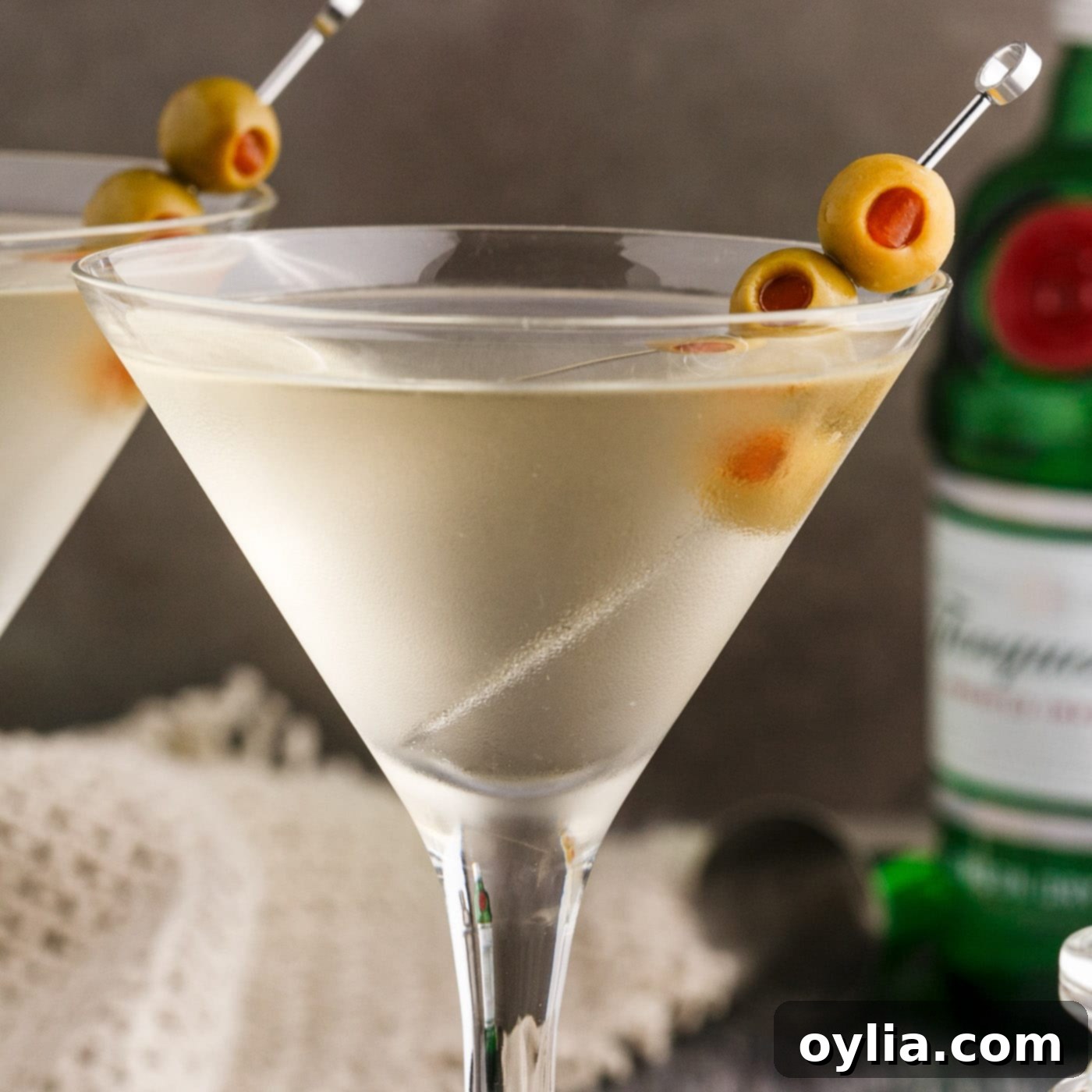Classic Dirty Martini Recipe: Crafting the Perfect Savory Cocktail
Dive into the world of sophisticated, savory cocktails with this classic dirty martini recipe. It’s an iconic drink that marries the crispness of gin or vodka with the herbaceous notes of dry vermouth and the distinctive, briny kick of olive juice. Topped with plump, green olives, it’s a testament to the art of simple yet profound mixology, offering a truly unique flavor profile that stands apart from sweeter concoctions.
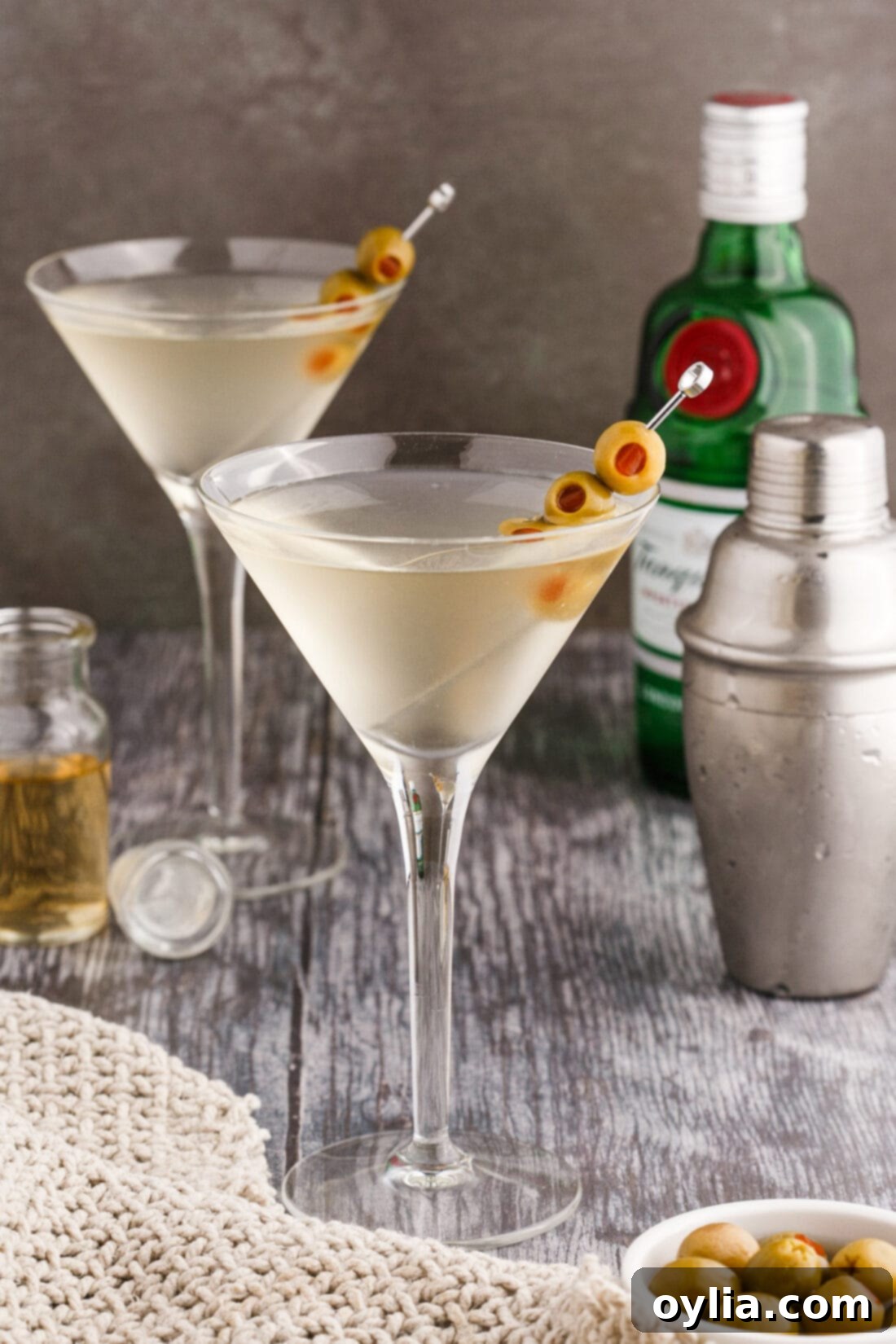
Why This Dirty Martini Recipe Is a Must-Try
A dirty martini is undeniably bold, characterized by its dry, salty, and sharp flavor profile that delivers a true “bite.” For decades, it has captivated cocktail enthusiasts and earned its place as a timeless classic that every connoisseur should experience at least once. This isn’t just a drink; it’s an initiation into a refined taste, a sophisticated choice for those who appreciate complexity over sweetness.
Unlike its sweeter counterparts such as a French Martini or an Appletini, the dirty martini offers an entirely different sensory journey. It’s a decidedly adult beverage, appealing to palates that have developed an appreciation for the robust and savory. The precise combination of spirits and olive brine creates a symphony of flavors—a delightful paradox of crisp and earthy, making it a truly classy cocktail for discerning drinkers.
What makes this specific dirty martini recipe so effective is its simplicity and balance. We focus on high-quality ingredients and a straightforward method, ensuring that even a novice can create a professional-grade cocktail at home. The secret lies in the quality of your gin or vodka, the freshness of your dry vermouth, and, of course, the distinctive brine from quality green olives. This recipe celebrates the martini in its most intriguing, briny form, providing a consistently delicious experience every time.
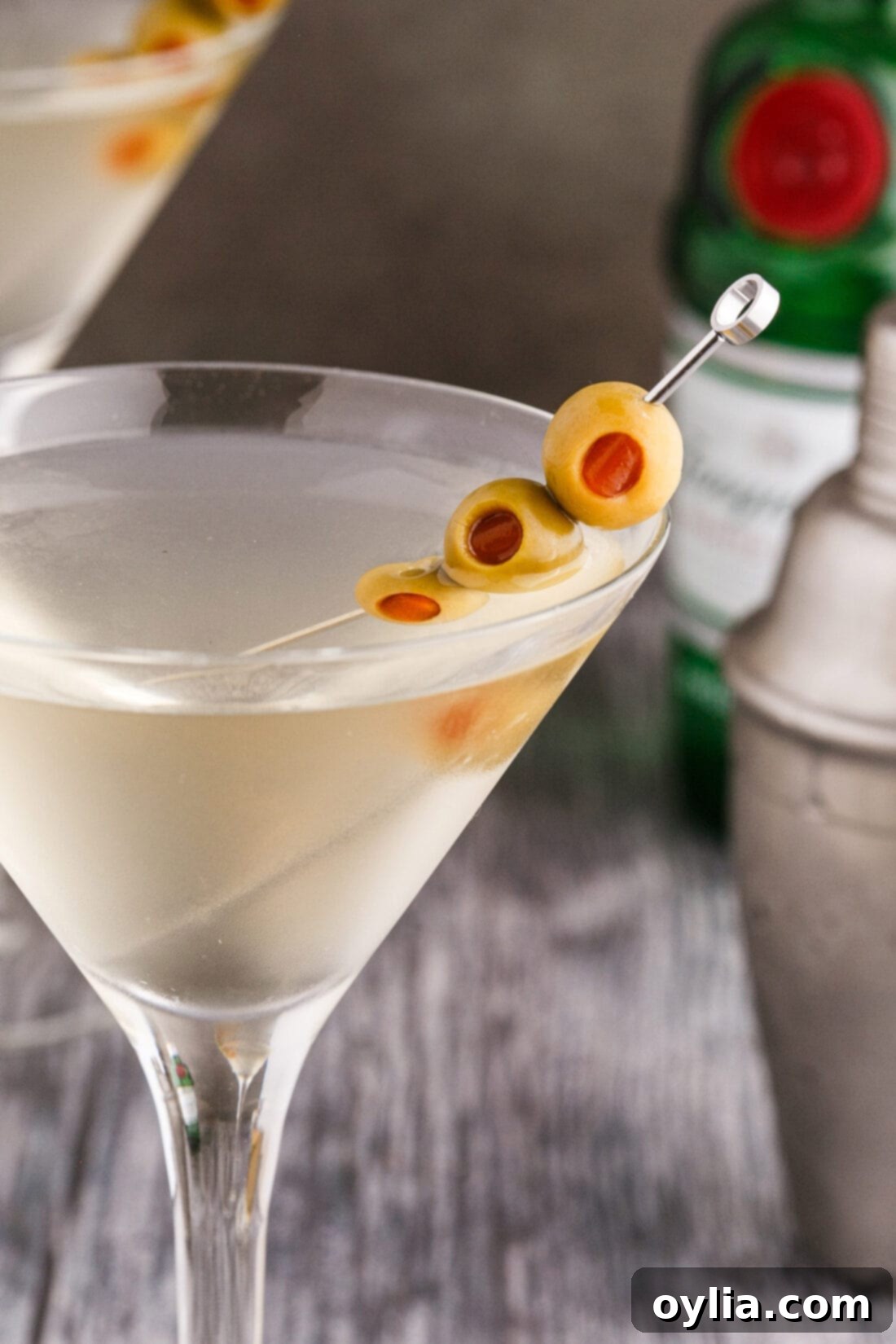
Essential Ingredients for Your Dirty Martini
Crafting the perfect dirty martini requires a careful selection of just a few key components. While the list is short, the quality of each ingredient significantly impacts the final taste. You’ll find all exact measurements and detailed instructions in the printable recipe card at the end of this post, but let’s delve into what you’ll need to gather to assemble this iconic drink.
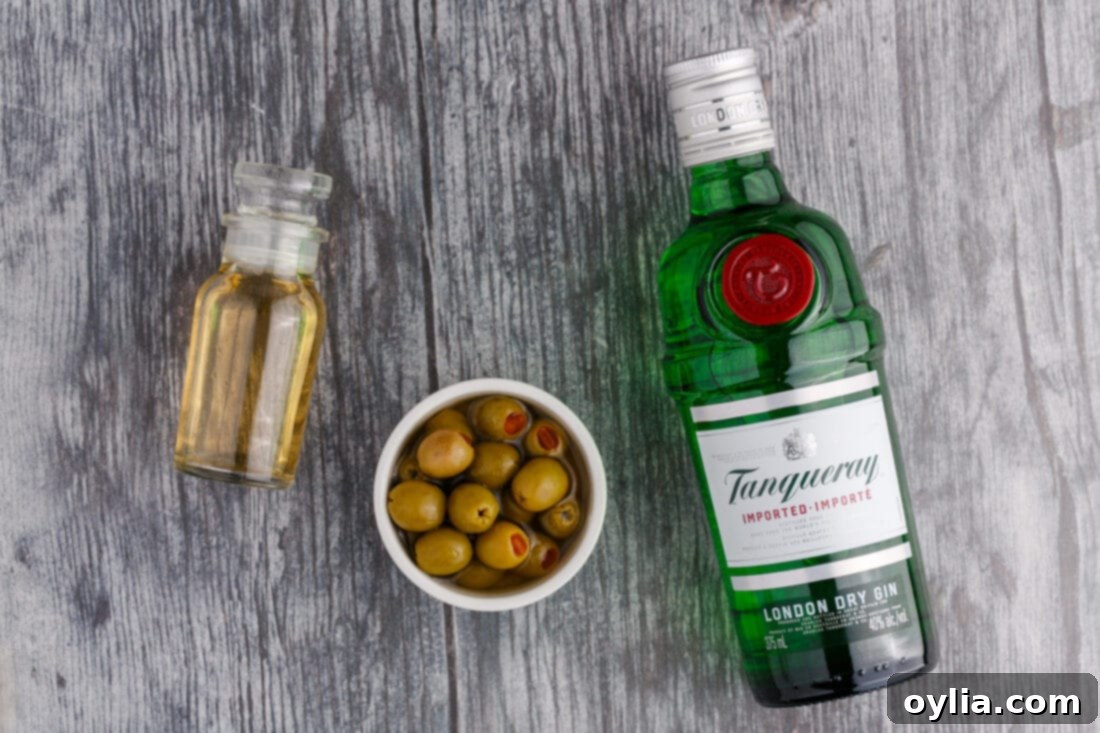
Ingredient Spotlight & Expert Substitution Tips
Understanding each ingredient’s role is crucial for mastering your dirty martini. Here’s a deeper look into the components and how you can tailor them to your preference:
THE LIQUEUR: Gin or Vodka?
- Dry Gin: The traditional base for a classic dirty martini. Gin imparts complex botanical notes—juniper, citrus, and various herbs—that beautifully complement the brine and vermouth. Opt for a high-quality London Dry gin for a crisp, robust flavor that stands up well in the cocktail. Some popular choices include Tanqueray, Beefeater, or Plymouth Gin.
- Vodka (Substitution): If gin’s botanical profile isn’t your preference, a good quality vodka makes an excellent substitute for a smoother, cleaner dirty vodka martini. Choose a premium vodka known for its purity and smoothness, as its subtle character will allow the olive brine and vermouth to shine. Brands like Grey Goose, Belvedere, or Tito’s are excellent options. The choice between gin and vodka largely dictates the martini’s overall character, so feel free to experiment to find your ideal base spirit.
VERMOUTH: The Aromatic Enhancer
- Dry Vermouth: Essential for a classic martini, dry vermouth (also known as white vermouth) is a fortified wine infused with aromatic herbs and spices. It adds a subtle layer of bitterness and complexity, balancing the spirit and brine. It’s crucial to use dry vermouth; sweet vermouth (typically red) would completely alter the drink’s profile, making it syrupy and sweet, which is not suitable for a dirty martini. Remember that vermouth is a wine and should be refrigerated after opening to preserve its freshness and flavor.
OLIVE BRINE: The “Dirty” Secret
- Olive Brine: This is the defining ingredient that transforms a classic martini into a “dirty” martini. The salty, savory liquid from a jar of green olives is the easiest and most authentic source. The type of olives used for the brine can subtly influence the flavor; often, brine from Spanish Manzanilla olives is preferred. The amount of brine you add dictates just how “dirty” your martini becomes, allowing for personalization from a subtle whisper of brininess to a boldly savory statement. For convenience, you can also purchase pre-bottled olive brine specifically made for dirty martinis, ensuring a consistent flavor profile.
GARNISH: The Finishing Touch
- Olives for Garnish: A dirty martini isn’t complete without a spear of olives. Classic green olives are the go-to, but don’t shy away from creative variations to enhance the experience. Consider olives stuffed with blue cheese for an extra tangy kick, pepper jack cheese for a hint of spice, or even garlic and jalapeño-stuffed olives for an adventurous twist. The garnish isn’t just for looks; it offers an additional burst of flavor and texture with each sip.
Step-by-Step: How to Make a Dirty Martini
These step-by-step photos and instructions are here to help you visualize how to make this recipe. For the complete printable version of this recipe, including all measurements and instructions, simply Jump to Recipe at the bottom of this page.
Making a dirty martini is a straightforward process, but a few key techniques ensure a perfect pour every time. Follow these steps to craft your ideal savory cocktail:
- Chill Your Glass: Before you begin, place your martini glass in the freezer for at least 10-15 minutes, or fill it with ice water while you prepare your ingredients. A perfectly chilled glass is paramount for a truly refreshing martini.
- Combine Ingredients in a Shaker: Fill a cocktail shaker about two-thirds full with fresh ice cubes. High-quality, solid ice is essential to minimize dilution and maximize chill. Add your chosen spirit (gin or vodka), dry vermouth, and the desired amount of olive brine to the shaker.
- Shake for a Minute: Secure the lid of your cocktail shaker and gently shake for approximately 30-60 seconds. The goal is to thoroughly chill and slightly dilute the cocktail. You’ll know it’s ready when the outside of the shaker feels frosty. While some prefer stirring for a silky texture and less dilution, shaking (especially for a dirty martini) introduces tiny air bubbles that can enhance the savory notes and create a more integrated flavor.
- Strain and Serve: Remove your chilled martini glass from the freezer (or discard the ice water). Strain the contents of the shaker directly into the prepared glass. A fine-mesh strainer can be used for an extra-smooth pour, though a standard cocktail strainer is typically sufficient.
- Garnish with Olives: Spear two or three green olives onto a cocktail pick and rest it across the rim of your martini glass. This not only adds an elegant touch but also provides an enticing aroma and an edible treat to enjoy between sips.
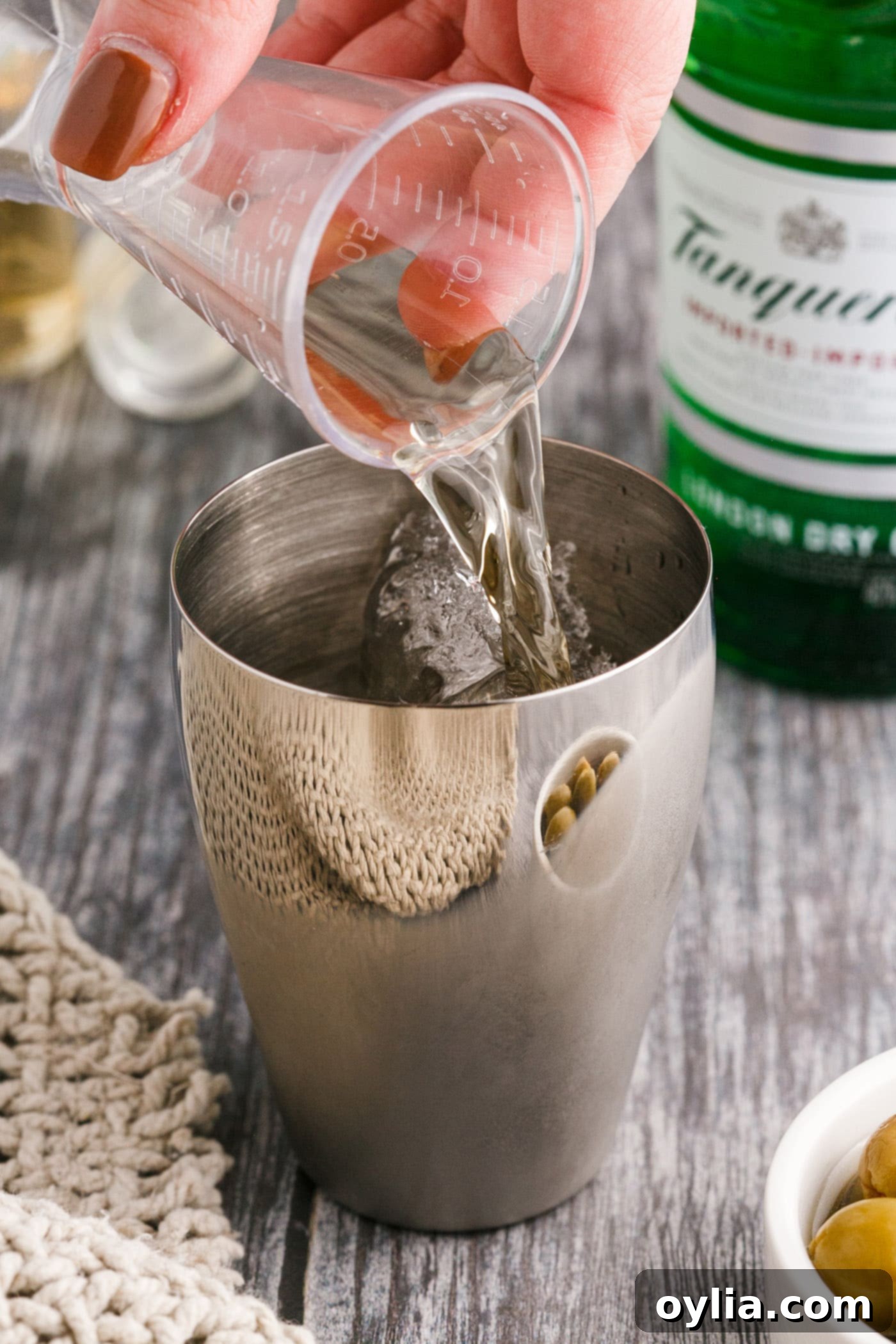
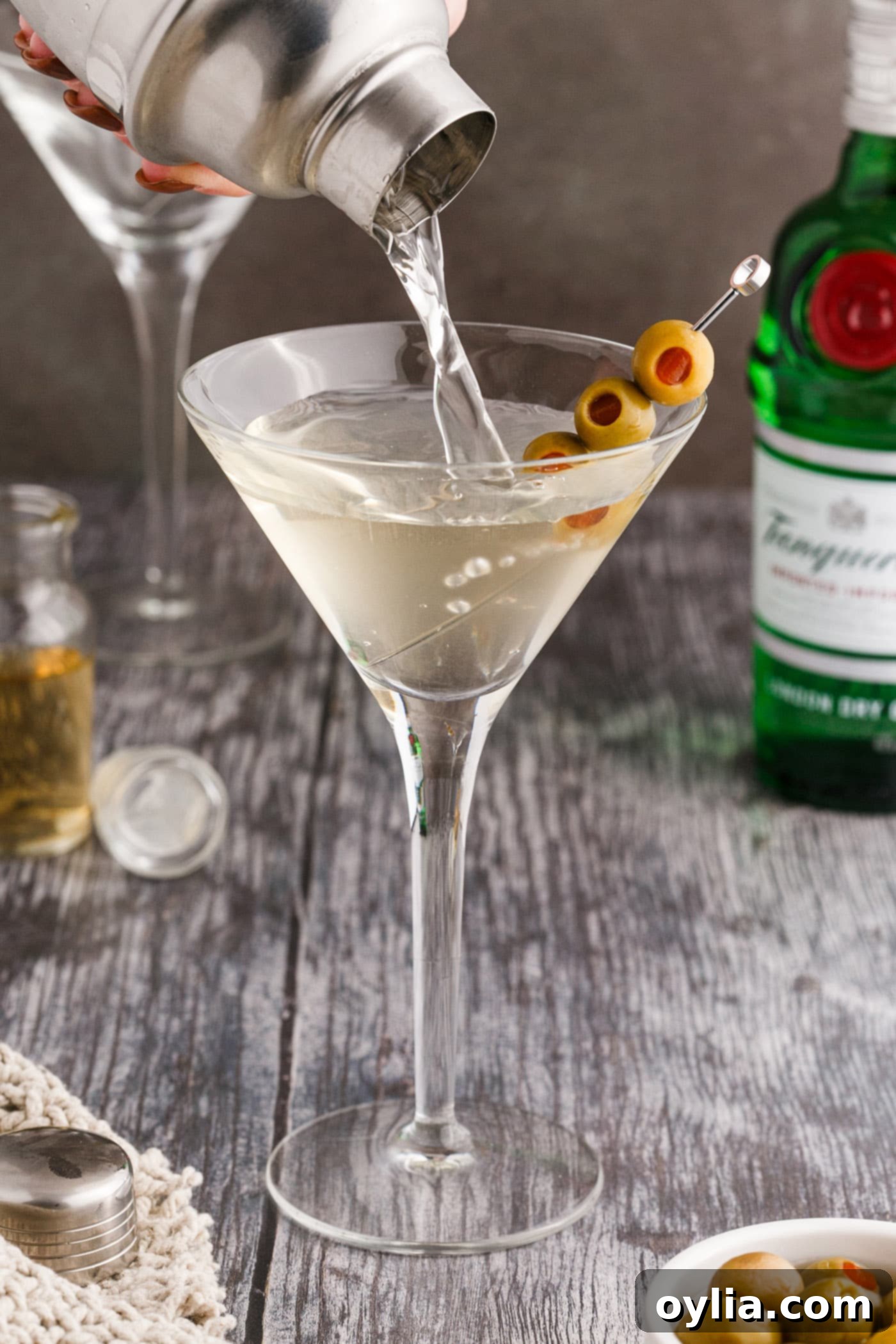
Frequently Asked Questions & Expert Tips for Your Dirty Martini
The debate between shaking and stirring a martini is a long-standing one, and for a dirty martini, the choice often comes down to personal preference and desired texture. When you gently shake a martini with ice in a cocktail shaker, you achieve a more thoroughly chilled drink with slight aeration, leading to a slightly cloudy appearance and a more integrated, “bruised” flavor. This method is excellent if you prefer your martini ice-cold with a bit of frothy texture. On the other hand, stirring a martini in a mixing glass with a long cocktail spoon results in a smoother, silkier texture with less dilution, maintaining a crystal-clear appearance. If you like your martinis with a more refined mouthfeel and a slightly warmer, less diluted profile, stirring is your method. Ultimately, whether you serve it straight up in a chilled martini glass or on the rocks, the best way is the way you enjoy it most!
For the brine, Spanish Manzanilla green olives are the classic choice and yield the most authentic flavor. Their brine is typically salty and slightly acidic, perfect for a dirty martini. For garnishing, you can stick with whole Manzanillas, or get creative with blue cheese, jalapeño, or garlic-stuffed olives to add an extra layer of flavor and intrigue to your cocktail.
The “dirtiness” of your martini is entirely up to you! The recipe typically calls for ½ ounce of olive brine, which provides a noticeable but balanced savory kick. If you prefer a “less dirty” martini, reduce the brine to ¼ ounce. For an “extra dirty” or “filthy” martini, increase the brine to ¾ ounce or even a full ounce. Experiment to find your sweet spot—or rather, your savory spot!
Martinis are best enjoyed freshly made, as the chilling and slight dilution from shaking or stirring are integral to their character. Preparing them too far in advance can lead to over-dilution as the ice melts, or a loss of crispness if left to sit. However, you can pre-chill your spirits and vermouth in the freezer (alcohol content prevents freezing solid) and keep your martini glasses well-chilled, making assembly quick when it’s time to serve.
If you shake your martini, it’s very common for it to appear slightly cloudy. This is due to tiny air bubbles being introduced into the drink during the shaking process and the rapid chilling of the oils from the gin and vermouth. This “bruised” appearance is characteristic of a shaken martini and is perfectly normal, especially for a dirty martini where the olive brine also contributes to the cloudiness. A stirred martini will typically remain clear.
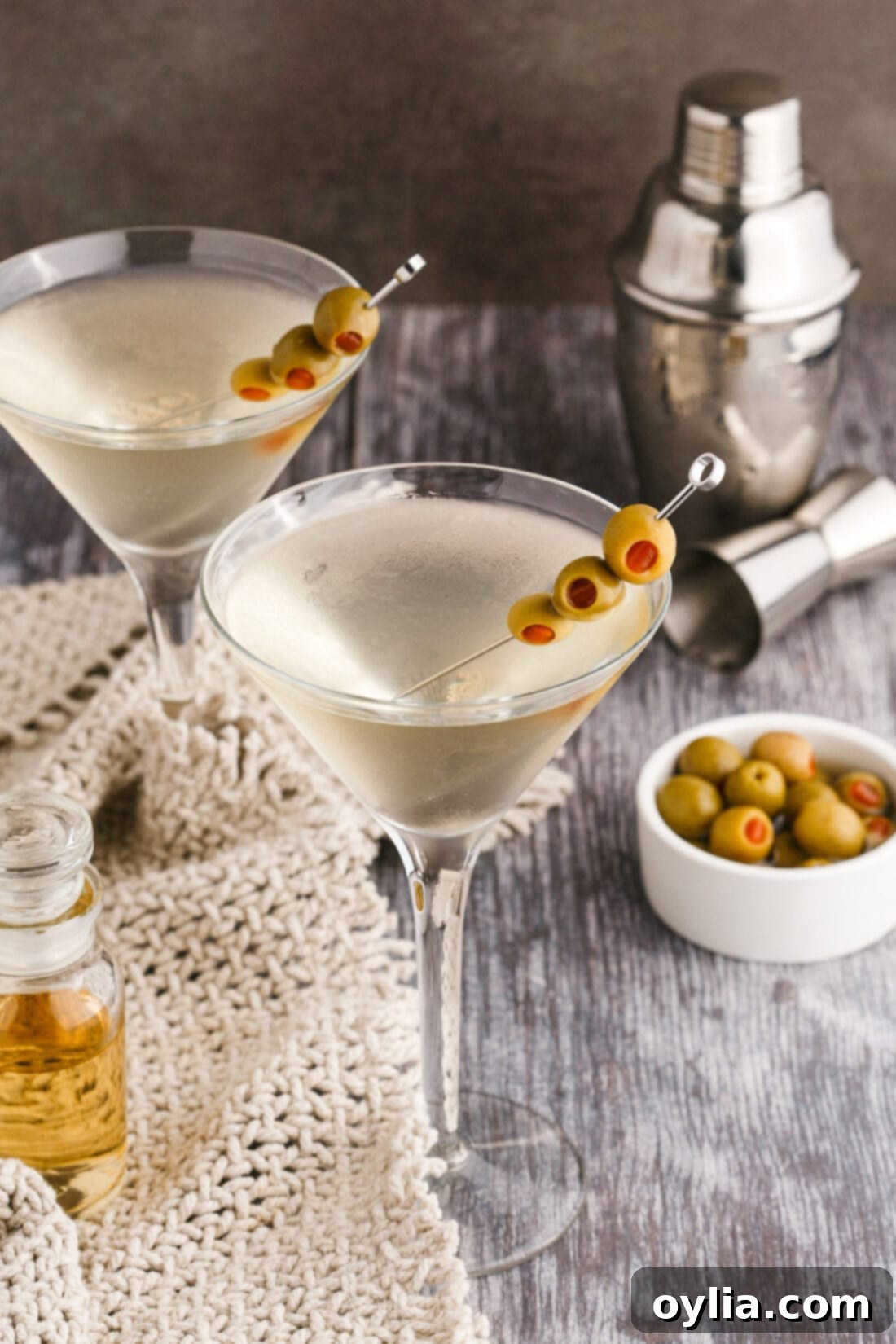
Perfect Pairings & Serving Suggestions
A dirty martini is a versatile cocktail that can be enjoyed in various ways and paired with a range of foods. Serve it in a chilled martini glass for a classic, elegant presentation, or on the rocks in a stylish rocks glass for a more relaxed experience. Always garnish with a cocktail pick of regular or stuffed olives to complete the drink.
When it comes to food pairings, the salty, savory profile of a dirty martini makes it an excellent aperitif and a fantastic complement to a variety of dishes. It pairs exceptionally well with classic appetizers like shrimp cocktails, crispy calamari, or a lavish charcuterie board featuring salty cheeses, cured meats, and crusty bread. For a main course, its robust flavor stands up beautifully to seafood options like baked salmon, grilled scallops, or even rich, buttery lobster. Its savory depth can also complement certain red meats or robust pasta dishes, making it a surprisingly adaptable drink for various culinary occasions.
Explore More Martini Creations
While the dirty martini holds a special place, the world of martinis is vast and exciting. If you enjoyed crafting this classic, or simply wish to explore other delightful variations, here are more martini recipes to inspire your next cocktail adventure:
- S’mores Martini: A sweet, dessert-like indulgence.
- Key Lime Pie Martini: Tart and creamy, reminiscent of the classic dessert.
- Pumpkin Pie Martini: Perfect for autumn, warm spices in a glass.
- Blackberry Gin Martini: Fruity and refreshing with a gin base.
- Blended Frostbite Martini: A cool, frosty, and visually stunning cocktail.
- Baileys Chocolate Martini: Rich and decadent for chocolate lovers.
- Espresso Martini: A vibrant, caffeinated pick-me-up.
I love to bake and cook and share my kitchen experience with all of you! Remembering to come back each day can be tough, that’s why I offer a convenient newsletter every time a new recipe posts. Simply subscribe and start receiving your free daily recipes!

Dirty Martini
IMPORTANT – There are often Frequently Asked Questions within the blog post that you may find helpful. Simply scroll back up to read them!
Print It
Pin It
Rate It
Save ItSaved!
Ingredients
- ice to fill the cocktail shaker
- 2 ½ oz dry gin
- ½ oz dry vermouth
- ½ oz olive brine
- olives for garnish
Things You’ll Need
-
Cocktail shaker or a mixing glass with a cocktail mixing spoon
-
Martini glasses
-
Jigger
Before You Begin
- You can substitute the gin with vodka if desired. Be sure you use dry vermouth, which is the white kind (not sweet, which is normally red).
- There’s a long debate on whether or not you should stir or shake a dirty martini. Whether you choose to use a chilled martini glass or to serve it on the rocks – it’s ultimately up to you. Gently shaking it in a cocktail shaker with ice chills the ingredients further, but if you like your martinis warmer then by all means go the route of stirring it in a glass with a long cocktail spoon. Either way will work!
Instructions
-
Fill a cocktail shaker with ice and add gin, dry vermouth, and olive brine.
-
Gently shake for about a minute and strain into a martini glass.
-
Garnish with a cocktail pick of olives.
Nutrition
The recipes on this blog are tested with a conventional gas oven and gas stovetop. It’s important to note that some ovens, especially as they age, can cook and bake inconsistently. Using an inexpensive oven thermometer can assure you that your oven is truly heating to the proper temperature. If you use a toaster oven or countertop oven, please keep in mind that they may not distribute heat the same as a conventional full sized oven and you may need to adjust your cooking/baking times. In the case of recipes made with a pressure cooker, air fryer, slow cooker, or other appliance, a link to the appliances we use is listed within each respective recipe. For baking recipes where measurements are given by weight, please note that results may not be the same if cups are used instead, and we can’t guarantee success with that method.
